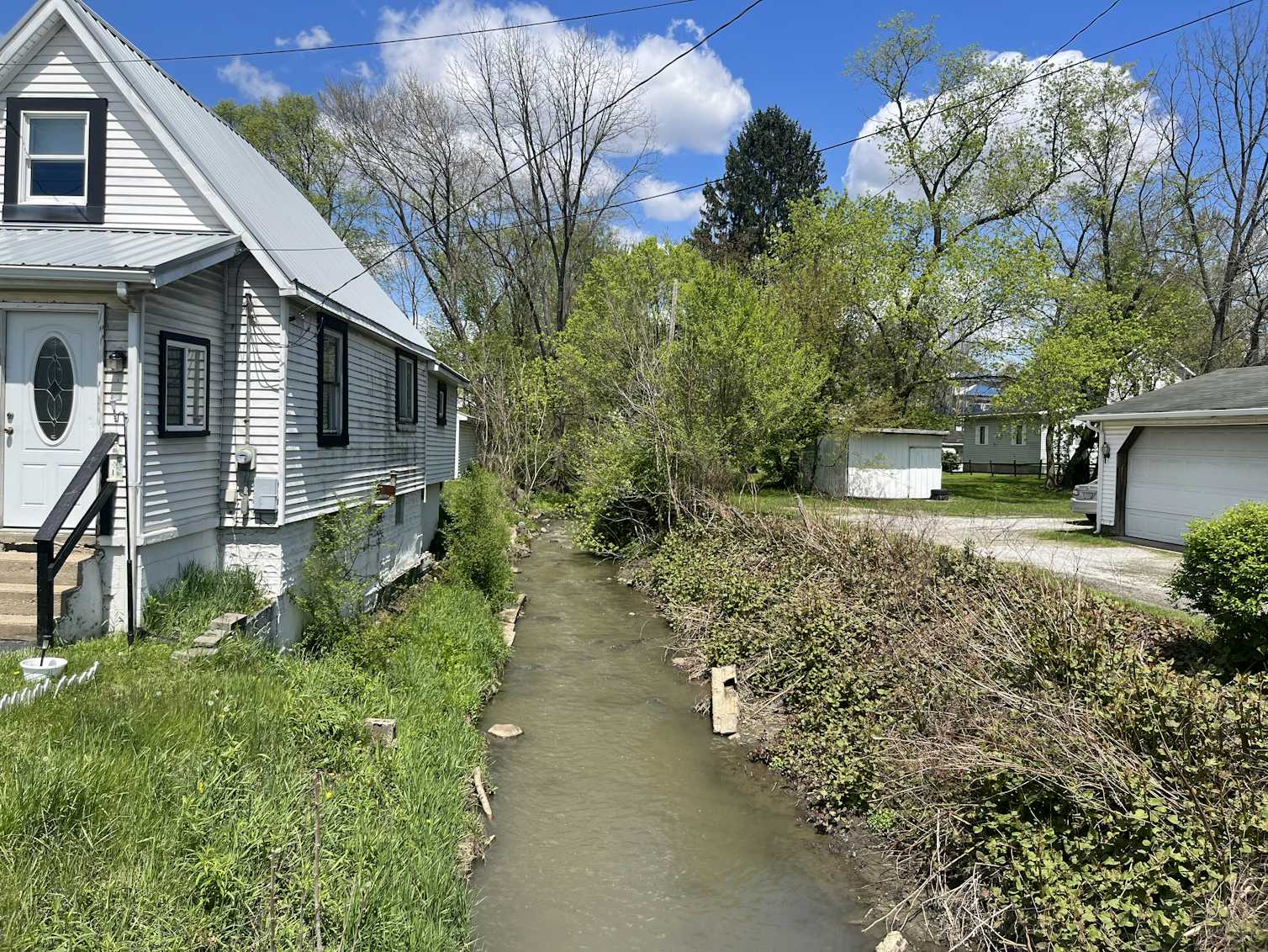Investigation Into Lingering Toxic Chemicals In Buildings After Ohio Train Derailment

Table of Contents
Types of Toxic Chemicals Released and Their Potential for Lingering Contamination
The derailment released a cocktail of hazardous substances, most notably vinyl chloride, butyl acrylate, and ethylene glycol monobutyl ether. These chemicals possess varying properties that influence their persistence in the environment and their potential for lingering contamination within buildings.
- Vinyl chloride: A known carcinogen, vinyl chloride is volatile and can easily become airborne, settling on surfaces within buildings. Its persistence depends on factors like temperature and ventilation.
- Butyl acrylate: This chemical is less volatile than vinyl chloride but can still persist in building materials, particularly porous ones like wood and carpet. It can also leach into water sources.
- Ethylene glycol monobutyl ether: This solvent is relatively mobile and can contaminate both air and water, potentially leading to lingering contamination in buildings through absorption and leaching.
The pathways of contamination are multifaceted:
- Airborne particles settling on surfaces: Microscopic particles carrying these chemicals can settle on surfaces, contaminating building interiors.
- Absorption into building materials: Porous materials like drywall, insulation, and carpeting can absorb these chemicals, releasing them slowly over time.
- Water contamination leaching into building foundations: Groundwater contamination can seep into building foundations, leading to indoor water contamination.
- Soil contamination tracking into buildings: Contaminated soil can be tracked into buildings on shoes and other surfaces.
Assessing the Extent of Building Contamination
Accurately assessing the extent of building contamination after the Ohio train derailment presents significant challenges. The diverse nature of the released chemicals and their varied persistence necessitates a multi-pronged approach to testing.
Various methods are employed to detect lingering chemicals:
- Air sampling: This involves collecting air samples to analyze the concentration of airborne chemicals.
- Surface wipes: Surface wipes are used to collect samples from various surfaces within buildings to determine the level of contamination.
- Water testing: Testing of water sources, including well water and municipal water supplies, is crucial to identify water contamination.
- Soil analysis: Soil samples are analyzed to determine the extent of soil contamination around affected buildings.
Comprehensive testing protocols are essential, emphasizing:
- Independent testing verification: Independent labs should conduct testing to ensure accuracy and transparency.
- Transparent data sharing with residents: Open and accessible data is crucial for building trust and informing residents of the risks.
- Long-term monitoring plans: Continuous monitoring is needed to track the persistence of chemicals and the effectiveness of cleanup efforts.
Health Risks Associated with Exposure to Lingering Toxic Chemicals
Exposure to the toxic chemicals released in the Ohio train derailment poses significant short-term and long-term health risks. The specific effects depend on the chemical, concentration, and duration of exposure.
Potential health problems include:
- Respiratory issues: Irritation, inflammation, and difficulty breathing.
- Neurological problems: Headaches, dizziness, confusion, and cognitive impairment.
- Cancer risks: Several of the released chemicals are known or suspected carcinogens.
- Reproductive issues: Potential impacts on fertility and fetal development.
Children, the elderly, and individuals with pre-existing health conditions are particularly vulnerable to the effects of these chemicals. Early detection and intervention are crucial in minimizing the long-term health consequences.
Cleanup and Remediation Efforts
Cleaning up contaminated buildings after the Ohio train derailment is a complex and challenging undertaking. Remediation techniques vary depending on the level and type of contamination.
Different remediation techniques include:
- Decontamination: This involves cleaning and treating contaminated surfaces to remove or neutralize hazardous chemicals.
- Demolition: In cases of severe contamination, demolition of affected buildings may be necessary.
- Air filtration: Specialized air filtration systems can remove airborne contaminants from building interiors.
The financial and logistical hurdles are significant, requiring substantial resources and coordination among various stakeholders:
- The role of government agencies: Government agencies play a crucial role in overseeing cleanup efforts and enforcing environmental regulations.
- The responsibility of the railroad company: The railroad company bears primary responsibility for the cleanup and remediation of the contamination they caused.
- Community involvement and support: Community engagement and participation are essential for ensuring effective and equitable cleanup operations.
Long-Term Monitoring and Support for Affected Communities
The need for ongoing monitoring of air and water quality cannot be overstated. Long-term health studies are also crucial to assess the lasting impacts of the derailment on the affected community.
Essential components of long-term support include:
- Establishing a long-term health registry: A registry can track the health of exposed individuals over time, identifying trends and potential long-term effects.
- Providing access to healthcare specialists: Access to specialized healthcare professionals is crucial for diagnosis and treatment of related health problems.
- Addressing psychological and emotional trauma: The psychological impact of the disaster requires comprehensive support services for the community.
Conclusion
The lingering presence of toxic chemicals in buildings following the Ohio train derailment poses significant health and environmental risks. Comprehensive testing, effective remediation strategies, and ongoing monitoring are crucial to mitigate these risks and ensure the well-being of affected communities. The long-term effects of this disaster require continued vigilance and support.
Call to Action: Demand transparency and accountability from responsible parties. Advocate for comprehensive testing for lingering toxic chemicals in your community and support initiatives aimed at ensuring the long-term health and safety of those affected by the Ohio train derailment. Learn more about the ongoing investigation into lingering toxic chemicals and how you can contribute to effective remediation efforts.

Featured Posts
-
 Best Appliance Deals For Memorial Day 2025 A Forbes Vetted Guide
May 23, 2025
Best Appliance Deals For Memorial Day 2025 A Forbes Vetted Guide
May 23, 2025 -
 Official Zak Starkey Back As The Who Drummer Says Pete Townshend
May 23, 2025
Official Zak Starkey Back As The Who Drummer Says Pete Townshend
May 23, 2025 -
 Exclusive Interview Vybz Kartel On Prison Freedom And New Music
May 23, 2025
Exclusive Interview Vybz Kartel On Prison Freedom And New Music
May 23, 2025 -
 Skandal An Der Uni Duisburg Essen Noten Fuer 900 Euro Verbessert
May 23, 2025
Skandal An Der Uni Duisburg Essen Noten Fuer 900 Euro Verbessert
May 23, 2025 -
 Us China Trade Deal The Final Push For Exporters
May 23, 2025
Us China Trade Deal The Final Push For Exporters
May 23, 2025
Latest Posts
-
 Nightcliff Robbery Teenager Arrested Following Fatal Stabbing Of Shop Owner In Darwin
May 24, 2025
Nightcliff Robbery Teenager Arrested Following Fatal Stabbing Of Shop Owner In Darwin
May 24, 2025 -
 Darwin Teen Arrested Shop Owner Stabbed During Nightcliff Robbery
May 24, 2025
Darwin Teen Arrested Shop Owner Stabbed During Nightcliff Robbery
May 24, 2025 -
 Natures Sanctuary A Seattle Womans Pandemic Story
May 24, 2025
Natures Sanctuary A Seattle Womans Pandemic Story
May 24, 2025 -
 10 Let Pobediteley Evrovideniya Karera I Zhizn Posle Triumfa
May 24, 2025
10 Let Pobediteley Evrovideniya Karera I Zhizn Posle Triumfa
May 24, 2025 -
 Early Pandemic Life How A Seattle Green Space Became A Womans Safe Haven
May 24, 2025
Early Pandemic Life How A Seattle Green Space Became A Womans Safe Haven
May 24, 2025
